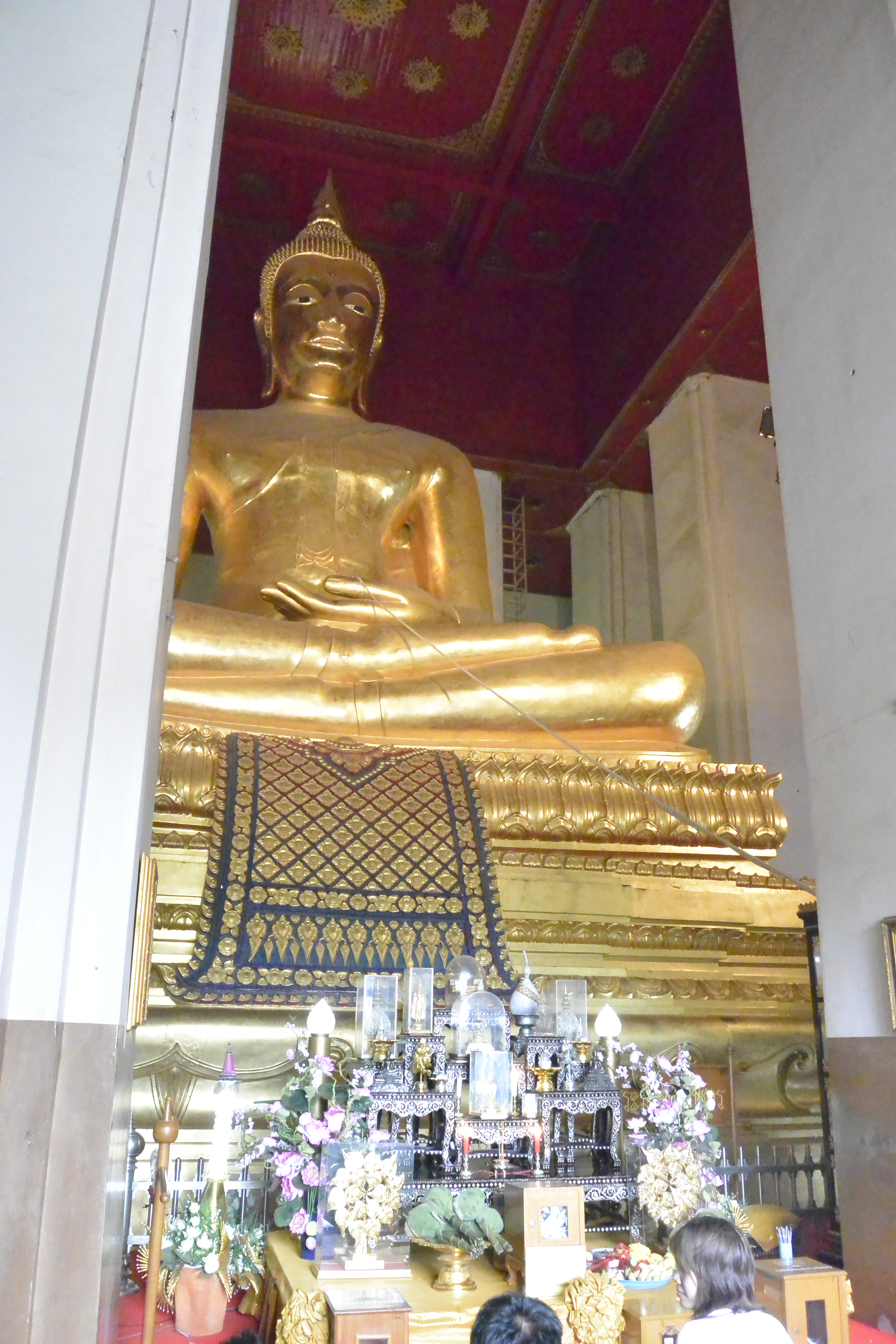Like the religious paintings at wats, any trip to Thailand is sure to include innumerable sightings of Buddhist sculptures. This is one area of visual arts that has been well documented, described and preserved.
There are a handful of significant periods of Buddhist sculpture, and if you know what to look for on the Buddha icons, they become much less monotonous and more interesting as you try to figure out which period’s style is having the most influence on the sculpture you happen to be viewing. Here’s a breakdown of the various periods and their characteristics.
Dvaravati Period
Dvaravati style dominated Buddhist art from the 7th to the 11th centuries, before the Khmer invasion of the area.
The style was heavily influenced by Indian culture and style and was in use at the beginning of the implementation of the 32 edicts that were written by Indian clerics to describe what a Buddha image should look like, so that viewers know it is the Buddha and not a regular person.
These sculptures are generally made out of stone, stucco, terra cotta and bronze. The most distinctive feature of the Dvaravati Period is the Wheel of Law sculpture, which represents the Buddha’s first sermon.
Lopburi Period
During the 11th through 13th centuries, the Khmer empire stretched into the area that is now Thailand. Lopburi was a provincial capital for the empire and developed its own style of Buddha images, with Khmer influences.
This style is most marked by the three-tiered lotus shape emerging from the Buddha’s head. Additionally, these Buddha’s wear a headband, have large, smiling lips, and long earlobes. Unlike most other styles in Thailand, these Buddhas may have straight hair.
Sukhothai Period
The Sukhothai Period came next and only lasted through the 13th to the 15th centuries, but this style is considered the most beautiful by Thais and is the rares t.
t.
Typical Sukhothai style can be recognized by a flame like halo on the Buddha’s head, small hair curls, an oval face, arched eyebrows, a long and slender nose and he wears an expression of contentment.
The body of the sculpture is slender, but with broad shoulders and is wearing a robe that hangs to the navel.
The most unique position of the Buddha for the Sukhothai period is standing position, and most sculptures were bronze.
Ayutthaya Period
 Through the 14th and 15th centuries, Ayutthaya grew more powerful and absorbed the weakening Sukhothai kingdom into its administration.
Through the 14th and 15th centuries, Ayutthaya grew more powerful and absorbed the weakening Sukhothai kingdom into its administration.
It was in the 15th century through the 18th century that Ayutthaya style flourished, during which adornments and accessories like a crown and jewelry began to appear on the Buddha.
It appears that the artists begin to pay more attention to the decorations of the statues than the expression of the Buddha’s face, which becomes less defined as the period goes on.
One specific thing about Ayutthaya style is that there is a demarcated hair line on the forehead and there is much more variety in the materials and poses used for the sculptures.
Lanna Period
The Lanna period runs parallel to the Sukhothai and the Ayutthaya period, as the Lanna kingdom was not part of the Siam kingdom until much later. It has its own style from the same time period.
Early Lanna style is marked by a large lotus bud finial, large hair curls, a plump torso with a slim waist, arched eyebrows and thin lips, a hooked nose and a round face.
The robe that is draped over the shoulder ends at the nipple, as opposed to the navel like most other styles.
As time went on, the Lanna style began to show more influence from Sukhothai stylings, and the finial became more flame-like, the hair curls became smaller and the face more oval.
Bangkok (Rattanakosin) Period
When Ayutthaya was sacked by the Burmese, the Siamese relocated their capital city to Bangkok.
The Ayutthaya style ended up just persisting through this time. During the reigns of King Rama I, II and III, traditional Siamese elements were emphasized. This included branching out into depicting other traditional Buddhist stories and myths.
The focus was on trying to retain the past and what was lost to the war. As time went on, the figures grew more and more ornamental and Western influences crept in. The figures became more realistic in their faces, hair and dress.
Pretty much all the temples in Bangkok showcase this style.
Modern Examples of Buddhist Sculpture
I’ve gone to a couple of sculpture parks here that are decidedly more modern. Sala Keaow Ku in Nong Khai and Wat Pa Non Sawan in Roi Et are excellent examples and you can see more from those places in the linked posts.

